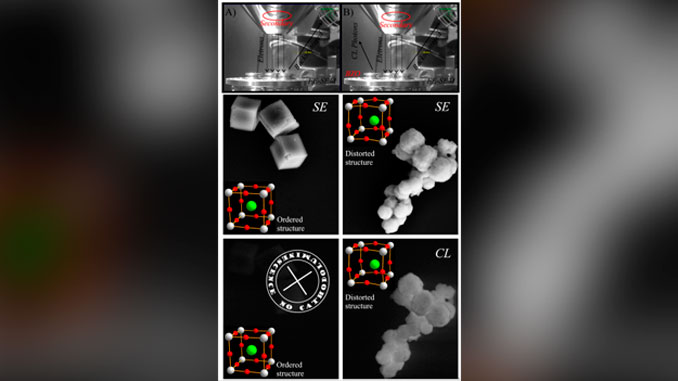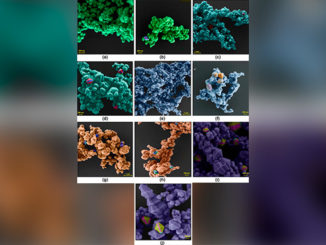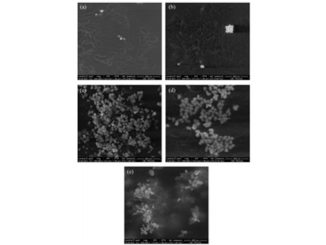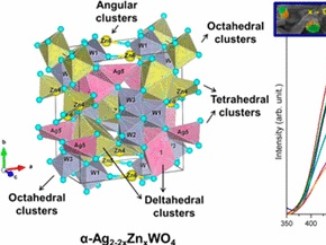
Writers: Mário L. Moreira; Juan Andrés; Lourdes Gracia; Armando Beltrán; Luciano A. Montoro; José A. Varela; and Elson Longo
Keywords: Excited states; Cathodoluminescence; Crystal structure; Band structure; Optical properties
Abstract: First-principles calculations set the comprehension over performance of novel cathodoluminescence (CL) properties of BaZrO3 prepared through microwave-assisted hydrothermal. Ground (singlet, s*) and excited (singlet s** and triplet t**) electronic states were built from zirconium displacement of 0.2 Å in {001} direction. Each ground and excited states were characterized by the correlation of their corresponding geometry with electronic structures and Raman vibrational frequencies which were also identified experimentally. A kind of optical polarization switching was identified by the redistribution of 4dz2 and 4dxz (Zr) orbitals and 2pz O orbital. As a consequence, asymmetric bending and stretching modes theoretically obtained reveal a direct dependence with their polyhedral intracluster and/or extracluster ZrO6 distortions with electronic structure. Then, CL of the as-synthesized BaZrO3 can be interpreted as a result of stable triplet excited states, which are able to trap electrons, delaying the emission process due to spin multiplicity changes.
DOI: 10.1063/1.4816247




